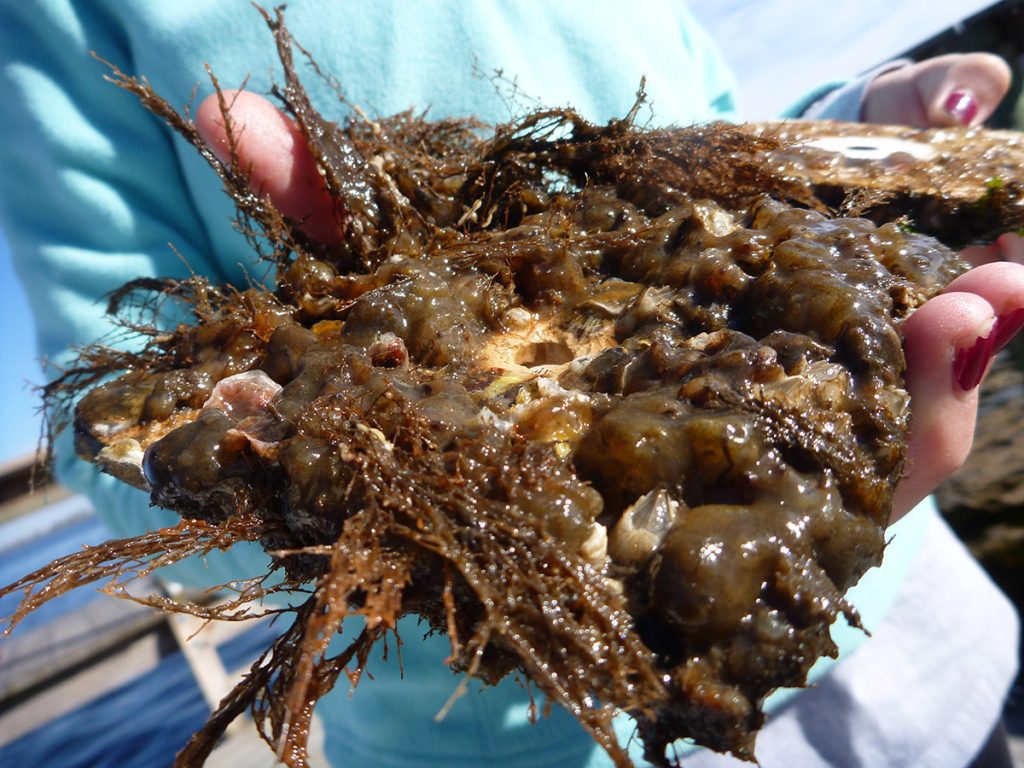We head down to Panacea, Florida to check in on the Gulf Specimen Marine Lab as Jack and Cypress Rudloe, along with GSML staff and volunteers, get things back in order.
Subscribe to the WFSU Ecology Blog to receive more videos and articles about our local, natural areas, and subscribe to the WFSU Ecology Youtube Channel
Rob Diaz de Villegas WFSU Public Media
I’m standing on a boat ramp on Dickerson Bay just two days after Hurricane Michael passed through. In the storm’s immediate aftermath, the Florida panhandle is in shambles. But it’s hard to reconcile that with what I’m seeing now. It’s a near cloudless day. A willet wanders on a sand bar, letting fiddler crabs get thick a few feet away before plunging in for a snack. Common buckeye butterflies sun on Spartina alterniflora, marsh cordgrass, and on the adjacent sand. There’s not a single human built structure in sight.
Just around the bend, I come back to reality. Wakulla County wasn’t hit as hard as counties to the west, but the docks along the shore have been wrecked. Winds battered buildings and storm surge carried salt water into the electrical systems of local businesses, necessitating repairs that could take weeks, or months.
This includes nonprofits like the Gulf Specimen Marine Lab.
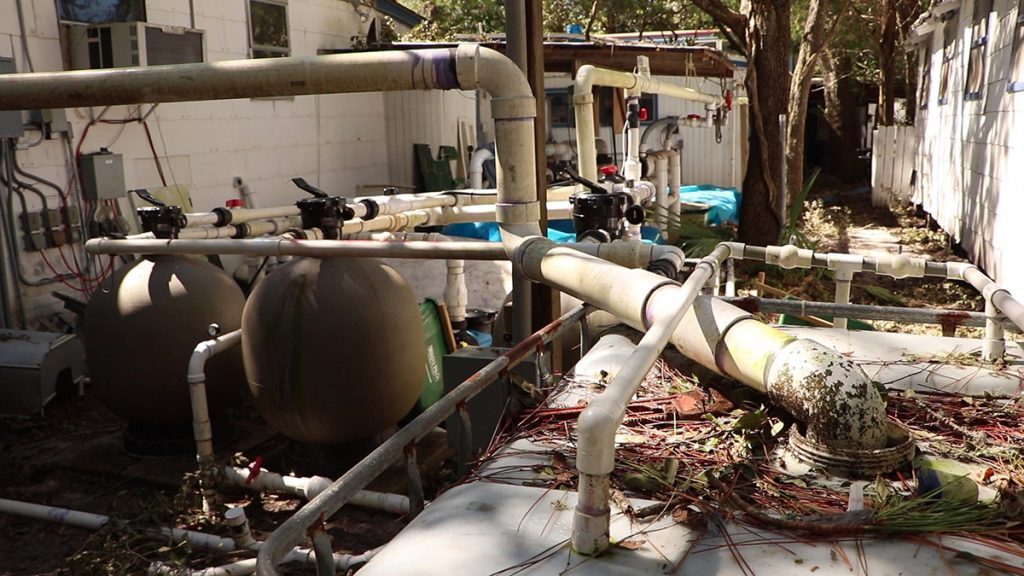
The many sea creatures housed at the Gulf Specimen Marine Lab are kept alive by an elaborate system of pumps, pipes, and filters.
Late Night Rescue Mission at the Gulf Specimen Marine Lab
“Cypress went in at 2 o’clock in the morning after he could get in.” says Jack Rudloe, “And worked to hook up auxiliary battery powered pumps and everything like that.” Had Cypress Rudloe not gone in so soon, “We would have lost everything.”
Jack founded the lab over fifty years ago, and his son Cypress is the Lab’s Executive Director. The lights are off, but after three days of moving animals and rerouting power, they’ve managed to keep most of their animals alive.
“We must have gone through at least 8-10 hurricanes over the years,” Jack says, adding that they’ve learned a few things about storm-proofing the facility. “The problem is, we keep adding complexity to it.”
Their generator is on stilts, placing it above where storm surge covered the lab. But much of the rest of the system got wet. “We had the big generator on, and all it was doing was keeping the ceiling lights on, because one of the crossover switches blew.”
The lab will be sending out specimens to schools and research facilities as usual. But it’s weeks to months away from being fully operational. And the lab’s research dock needs thousands of dollars of repairs.
“We have to get donations. We have to make this thing work in its own right.” Jack says. “That’s okay most of the time, but when it gets to something like this… it starts getting to hurt.”
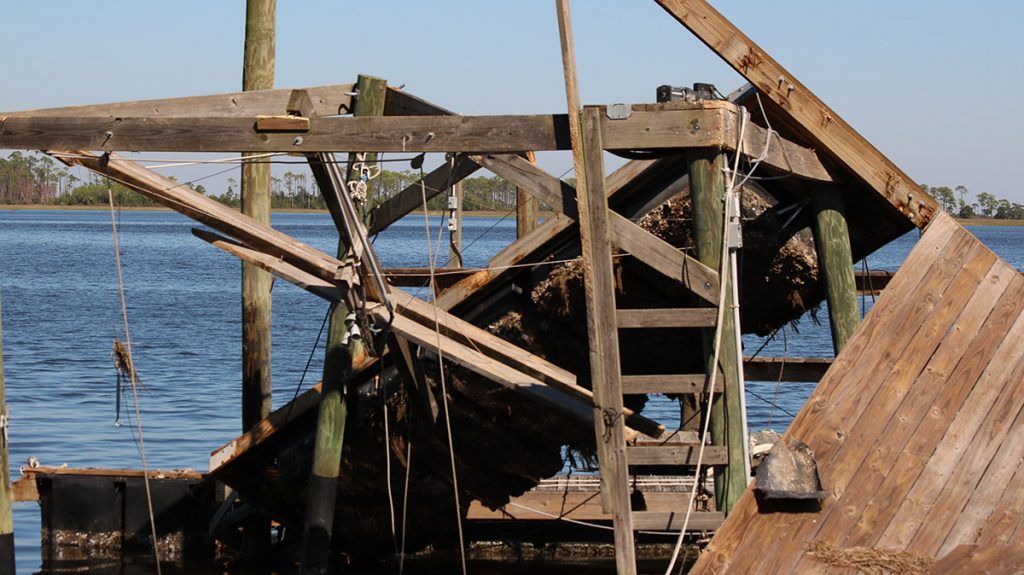
Under the dock, an ecosystem of nudibranchs, hydroids, barnacles, mussels, oysters, and sea squirts. Stuck out of the water, these animals cannot survive.
Rebuilding the “Living Dock”
Jack Rudloe takes me to see their research dock. We walk out as far as we can before there’s nowhere left to stand. “Those oysters are growing nice,” he says. I look over the edge at a clump of oysters, which grow easily on bridge and dock pilings.
Hurricane Michael has torn apart this dock, which has been used to conduct experiments, collect samples, and which was the subject of Jack’s book: the Living Dock.
“About 1969, when we first built it, we saw what was growing on it, and then scientists would do research with it.” He remembers. “We had a dentist here that was growing barnacles on teeth, just dead teeth that were basically to look at the adhesive properties of the barnacles.
“And just over the years, it’s been used in anti-cancer material, certain sea squirts are in there.”
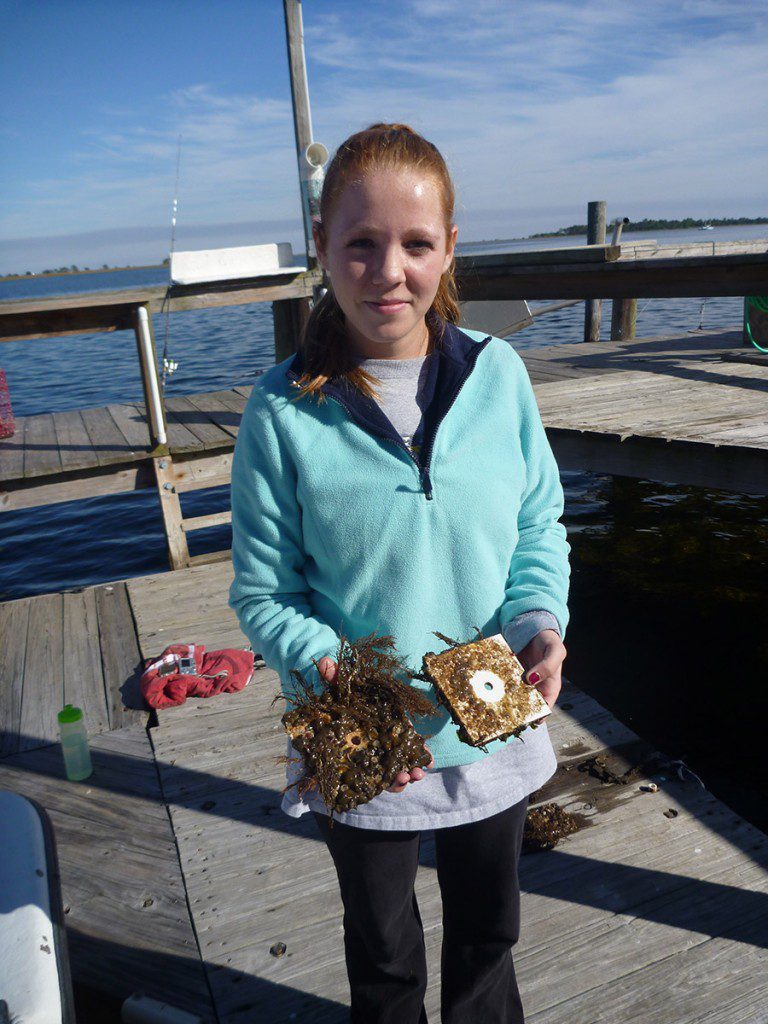
Chloe Jackson was an honors biology student at Florida State University. She interned at the Gulf Specimen Lab over the summer of 2014.
In 2014, we met a Florida State University biology major who was conducting an experiment on the dock. Chloe Jackson was using recruitment tiles (such as those we often saw on our In the Grass, On the Reef project) for an experiment. Researchers use these in places that recruit fouling organisms, the oysters, barnacles, etc. that attach to hard surfaces in marine environments. She placed a set in the intertidal zone, where they’d be exposed by the tide, and another where they’d be continuously covered (the subtidal zone). Then she’d record the different organisms on each.
The dock has been rebuilt and modified over the years, but Jack would like it to be hurricane proof. That would be a bit pricier than merely patching it back up. Jack figures it would be “Probably a couple hundred thousand dollars to really redo the whole thing.”
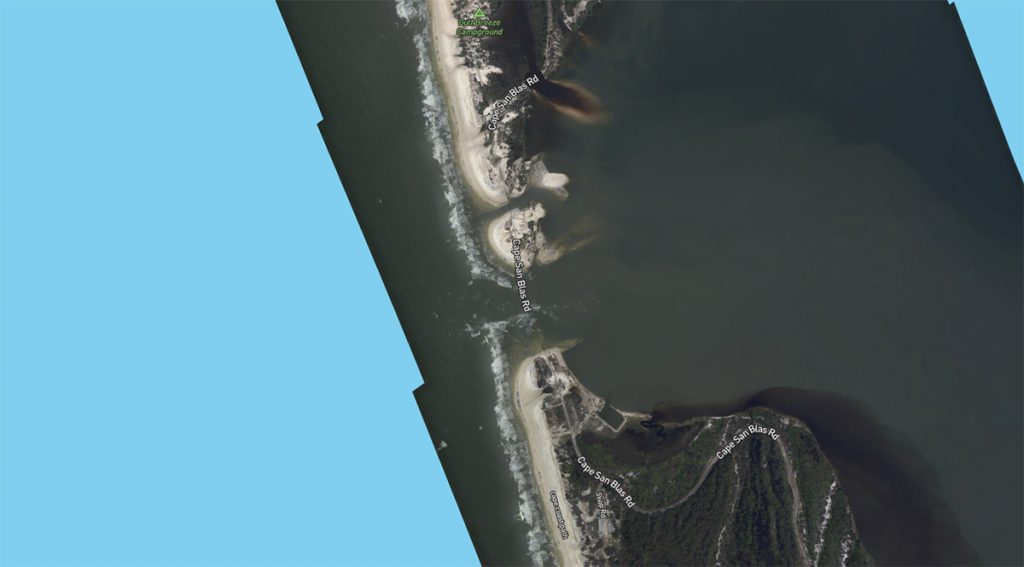
A satellite image showing where St. Joseph Peninsula has become an island. Image courtesy the National Oceanic and Atmospheric Administration.
The Forgotten Coast, Altered
By now, many of us have seen satellite images of our north Florida coasts post-Michael. Most striking is that Saint Joseph Peninsula is now an island, having broken of at Eagle Harbor, a thin stretch of land.
We visited the tip of the peninsula earlier in the year, to a prolific snowy plover nesting site. It’ll be interesting to return to this and other natural features affected by the storm, to see how they respond in the coming months and years. Will Raya Pruner and her crew have to start kayaking to the “Snowy Plover Factory?”
If you haven’t seen the images, they’ve been compiled by the National Oceanic and Atmospheric Administration (NOAA).

